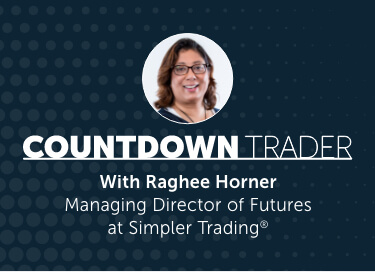Being that we’re in the height of earnings (and I’ve received so many questions about how to play earnings) it’s a perfect time for me to share with you how I trade. Many of you that have been with me heard me talking about the 6-4-2 earnings window strategy.
So, what is the 6-4-2 strategy?
First of all, why do stock, ETF and futures traders alike need to know about earnings? Because earnings are a type of “hot zone.”
What is a hot zone?
Hot zones are certain events such as earnings. They’re volatility and volume events that are scheduled and coming out on a certain day.
I believe a lot of traders love the “no pain, no gain” or “no guts, no glory” of taking something into the volatility of the earnings hot zone. I get that it’s the same thing with the non-farm payroll hot zone, or a central bank event, or Jerome Powell (Fed chairman) speaking. Any of those hot zones are going to create high volume and high volatility. Earnings is just one of them.
Let’s get to it…
Start scanning six weeks out from the earnings date. This is the “6” in the 6-4-2 routine of trading earnings. I want to see that, in front of this earnings hot zone event, the market is already rallying.
Look at the daily time frame. That tells me market participants are already expecting a type of response. I’ll tell you this gang, usually, but not always, the bulk of your profits are going to be made in an uptrending market.
This is the structure of the 34 EMA Wave (image above). When I have an uptrending market starting six weeks out, even into the four-week window, that’s the sweet spot. Six to four weeks out, even three to four weeks out, is okay. This is the “4” in the 6-4-2 routine.
Looking for a pullback to buy
Within that six- to four-week time frame, we’re looking to buy the pullback and play the swing high. We are looking to capitalize on the anticipation of a rally into earnings.
Start looking for these opportunities six weeks out. Look for the trends. Remember that the bulk of your profits aren’t going to be the earnings number, but rather that ramp up in anticipation.
You want to see the structure of anticipation in this uptrend environment. The goal is to not be in the market at earnings!
Inside of two weeks from the earnings report, I like to say “no” to any setups. I’m running out of time at this point, probably 10 trading days or less. The implied volatility is going higher. There’s not a lot I want to do inside two weeks of the earnings date. Yes, you guessed it…
That is the “2” in the 6-4-2.
The closer we get until the earnings day (inside two weeks) any trades get troublesome because you have less time. It’s going to leave very little time to see the follow through that we need and then enough time to get flat by earnings. That’s why I like starting so far in advance.
Be aware that inside two weeks to earnings, the implied volatility goes up and the market can start acting a little strange. There is a pre-play strategy we’re talking about right now, playing, and being flat before earnings.
Earnings isn’t just a stock or ETF phenomenon. It affects futures too, because if you’re trading the indices, you’re trading a bundle of stocks.
Start with a 6-4-2 foundation
You’ll realize, as futures traders, earnings do have an effect. Certain stocks and certain sectors are going to affect the indices.
What I call earnings season as an ETF and index trader is a “tail wags, the dog season.” In other words, if a stock (even a low-weighted stock) has a disproportionate price move, it can affect the larger index or ETF.
This is not only a stock strategy, it’s a strategy that will influence how you view volatility in trading ETFs and futures. Looking for an uptrend, buying on pullbacks, and following plays as the market’s attention is heightened due to the earnings release is the play. We are playing the rallies into earnings in the uptrending names.



